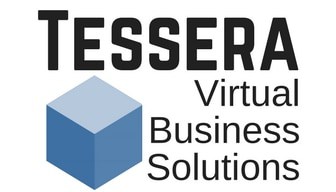Whether you are brand new to using Asana or you have been using the platform for quite a while, it’s important to have a place to get your Asana questions answered quickly and easily. Sure, you can Google your questions and come up with 1000 hits, but wouldn’t it be easier to have your own personal expert?
One benefit of bringing an expert at Tessera in to help you improve your use of Asana is that you will automatically have personal access to that expertise during your engagement. Questions are typically answered within 24 hours and will be personalized to your Asana needs.
While working with client teams, we have compiled some frequently asked questions that we believe will help you as well. Here are 4 quick answers to a few of our clients’ questions.
Can subtasks inherit the description of the parent task?
Subtasks do not inherit any parts of the parent task. They are designed to stand on their own. When someone is working on the subtask, they can see and click on the parent task name at the top of that subtask to get the full context of the parent task, including the description and the other subtasks included there.
For more information on using subtasks in Asana, check out this guide.
When I create a task from the orange + button, how can I easily go to the newly created task?

When you create a new task from the orange omni-button, there will be a “slide-in” bar in the lower-left corner of your screen. Simply click on the new task there and you will be taken right to it.
Additionally, you can create tasks in several other ways. Within a project, just click on the “Add Task” button and begin typing your task. When you are on any task list (in a project or in your My Task list), press enter, and start typing.
You can also create tasks from emails or Slack messages. Asana integrates with top tools to save you time and make it easier to manage your tasks.
How do we use Asana for reminders about recurring tasks to be done before and after recurring meetings?
Meetings tasks and reminders are a great use of Asana. You can create a “task” inside an ongoing meeting project for a recurring meeting. This task would include subtasks for agenda items and/or follow-up tasks.
OR
You can create a “team” for meetings where each meeting with an agenda and follow-up tasks is a templated project.
If you use the latter, in the meeting template, you could have a section called “Pre-meeting tasks” and one called “Post-meeting tasks.” The other sections might be “Agenda” and “Next Actions” which would hold the follow-up tasks from the decisions made in the meeting. Of course, these follow-up tasks can live here AND in specific projects where they may need to live with the multi-home feature for tasks.
How do we keep our Asana practices straightforward enough that our staff finds them helpful, not cumbersome?
We train teams to agree to 3 basic things for personal daily work management.
- Check My Tasks frequently throughout the day to stay up to date on what has been assigned to you.
- Check Asana Inbox 2-3 times a day, staying up to date on tasks and projects you collaborate on.
- Communicate inside Asana (comments on tasks, messages in projects) as much as possible.
When creating tasks, these are the basic best practices that we teach:
- Begin actionable tasks with a verb. This provides clarity for the assignee.
- Assign every task. This assures the task lands in someone’s My Tasks list.
- Add collaborators as needed to tasks. Who needs to follow the progress of this task?
- Give every task a due date. Without a due date, tasks are hard to nail down and they may fall to t he bottom of lists filtered by date.
- Add files and links to tasks where needed. Clarity is key. Providing all the pertinent information on the initial task cuts down on questions, time spent searching for information, etc.
- Use @mentions for people, projects, and tasks. This simply links work to other related work for even more clarity.
Of course, there are other best practices that you will decide as an organization, (structure, project naming conventions, etc) but these are basics that are easy to implement and they become second nature after a short time.
If the full team agrees to be patient with implementation and there is an expectation that everyone can remind others to use Asana in an agreed-upon way, there is always a faster success rate!
It is also helpful to remember that how you use Asana collaboratively can change. If a team member has a better way to set something up or communicate in Asana, they should be free to suggest it. Rolling out Asana should be collaborative and will see a series of changes over time.
If you found the answers to these questions helpful, be sure to check out our other Asana FAQs from our clients.
Asana Tasks – Your Questions Answered
Or peruse all our Asana articles written just for you!


